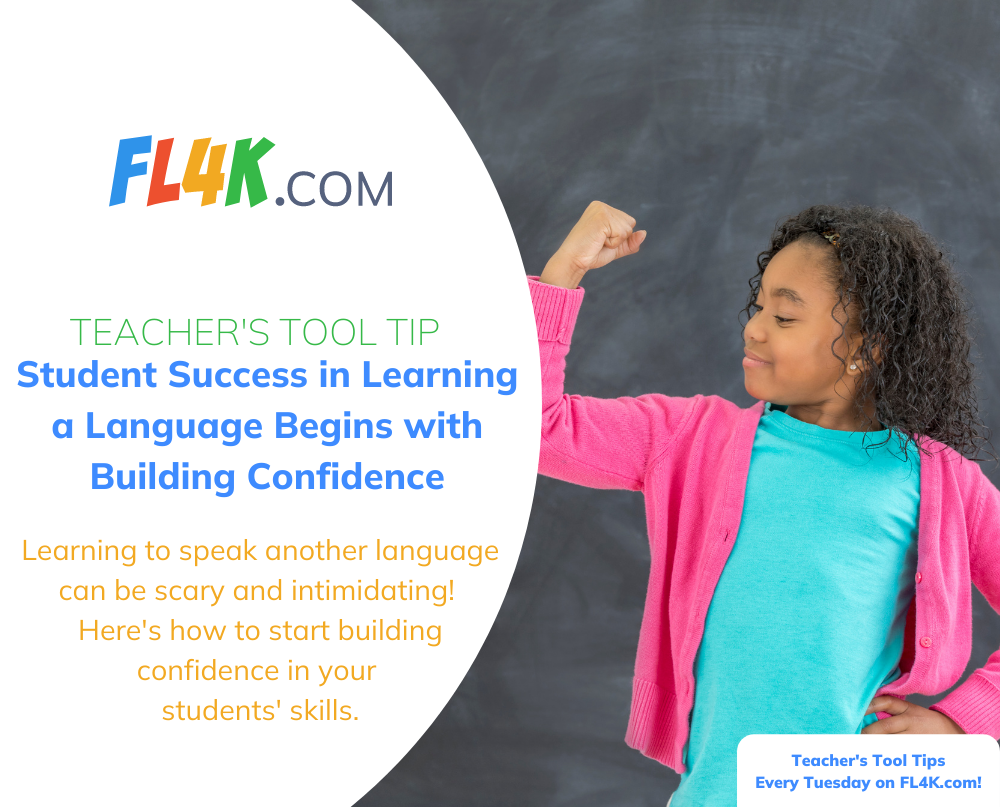Student success can be elusive at times if we don’t understand how to build confidence in the language classroom. Let’s first put ourselves in the shoes of our students and consider for a moment what it is like for them to achieve student success.
Learning to speak another language can be scary and intimidating! There is the challenge of having the right vocabulary words to express oneself as well as the right structures, not to mention the correct pronunciation. This can be overwhelming for any student to consider all at once.
Measuring student success using the ACTFL Language Standards
Using rubrics that clearly outline the expectations for student success can alleviate anxiety for language students and give them specific goals to work toward.
In the Wayside EntreCulturas textbook series for French and Spanish, the rubrics for the ACTFL Standards can be found in the indices at the back of the book and adapted for individual use. Teachers really need a MOPI training workshop in order to interpret them best.
Today’s language teacher needs a clear understanding of what it means to be a novice, intermediate, or advanced language student according to these standards in order to create a standards-based classroom where students know what is entailed in reaching success. It is amazing to watch students strive to reach standards when they know specifically how student success is measured. Comparing students to a rubric and not to each other is a formula for student success.
Creating a cooperative vs. competitive community
From day one in the world language classroom, teachers need to work toward building a supportive community where students feel comfortable taking risks. This comes about through creating many group activities where students have the chance to get to know each other and practice language learning together.
Encouraging students to help each other achieve student success instead of competing with each other to succeed comes in studying group development strategies and instituting them in the classroom on a regular basis.
Teachers can attend annual professional development conferences like ACTFL, NECTL, SWOLT, and SCOLT to learn more about how to promote cooperation in the classroom. My colleague, Elena Giudice, and I will be presenting a whole session called “#ALLin!: Developing an inclusive and motivated community of learners” on April 1st at the Southern Conference on Language Teaching (SCOLT) in Norfolk, Virginia.
There are truly so many creative ways to create a community of mutually supportive learners, all striving for student success and all achieving it at their own pace!
Can-Do Statements help guide student success
Every world language teacher should familiarize themselves with the NCSSFL-ACTFL Can-Do Statements. It is important to use benchmarks to help guide student success.
Teachers can use these national guidelines but can also make up their own Can-Do Statements for every unit. Think of exactly what it is that you want your students to be able to do at the end of a unit and then guide them accordingly. It is amazing for students to realize what they “Can Do” versus the out-moded critical teaching style.
Remember when your language teacher was very quick to correct every grammatical error in front of the whole class? This leads to shame, embarrassment, and the ultimate resignation of “I am really bad at language learning.” Be a teacher who concentrates on what each student CAN DO and learn more about it on the ACTFL website.
These are just a few basic ways to begin to learn more about teaching for student success!
Looking to improve your students’ or children’s language skills? Learn how you can get early access to our groundbreaking language program that teaches kids Spanish the fun way! Sign up here.
